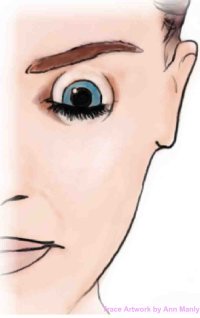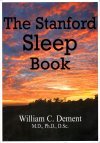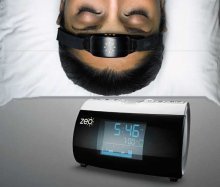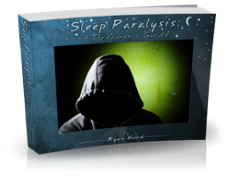
| Connect & Subscribe |
What Really Happens Throughout the Night!
An Outreach Project by Garrett Delgado, Spring 2010 | Return To Outreach Projects 2010
Most people go through life knowing very little about the third of their day they spend sleeping. We all take classes in Science, English, Mathematics and more; however, when are you supposed to learn about the valuable time between your last hours cramming before a test and breakfast the next morning? It simply just does not happen.
We live almost in complete ignorance about sleep--so here is your 5-minute lecture on the three most important aspects of sleep:
REM vs. Non-REM Sleep:
During the night everyone experiences two types of sleep, REM (Rapid Eye Movement) and Non-REM, that cycle 4-6 times a night; each pair lasting on average of 90 minutes in length.
Non-REM sleep is the stage in which most people enter sleep, and consists of 4 additional stages of its own. During these stages, people exhibit slight muscle contractions of the legs and jaw and less active brain functions. The majority of the night is spent in non-REM sleep, yet dreaming in these stages of the night is uncommon and not vivid like in REM sleep.
 The rapid eye movements that occur during sleep give the stage REM sleep sleep its name.
The rapid eye movements that occur during sleep give the stage REM sleep sleep its name.
REM sleep is characterized by movement of the eye, complete loss of voluntary muscles, irregularity in breathing, and an extremely active brain. In fact, the brain is similarly active during the REM periods of the night than during wakefulness, and in some parts of the brain it is more active. This intensity occurs largely because of the dreaming, when your brain is not only trying to perceive all the images, sounds, smells, and physical interactions of your dream, it is also creating the world in which you perceive them. Most people dream every cycle (4-6 times a night), but people usually only remember one at most, typically the last.
Sleep Debt:
Your personal sleep debt is a measure of the number of hours you have slept compared to the number of hours your body needs to sleep to function optimally.
Lets say the amount of sleep you need every night is 8 hours to feel 100%, and when you get 7 hours you feel 95%. This may not seem to be a problem until you sleep 7 hours a night for a week strait. The debt keeps on accumulating, wearing down your body until you are operating on an empty tank with a large sleep debt pressing on your back, lowering your grades or work output, athletic performance, and even personal relationships.
This lack of sleep can be fatal as over 100,000 car crashes a year are a result of drowsy driving leading to 1,500 fatalities.
The only way to remedy your sleep debt is to get more sleep than your body requires in a day, until you are all caught up. Cheating on your sleep is cheating yourself out of an efficient day--it eventually catches up to you.
Sleep Disorders:
Normal sleep is defined as sleep that provides people with the energy to carry themselves effectively through the waking hours. Illnesses that interfere with your energy can be considered a sleep disorder ranging from narcolepsy to sleepwalking to jet lag. There are 84 types of sleeping disorders and they generally can have four basic symptoms:
- Fatigue
- Insomnia
- Movement-related sleep behaviors
- Snoring
Yes, snoring can be a clear symptom of sleep apnea (an illness that limits the oxygen flow to your body). People with sleep apnea have been recorded to wake up 500 times a night (more than once a minute).
Sleep disorders can be very serious causing many of those affected to accumulate a large sleep debt. Often people go through their whole lives without realizing what is causing their lack in daytime performance. The answer may be as simple as getting more sleep or being prescribed medicine that allows your body to receive more healthy sleep.
DO NOT let yourself be a victim of a bad night sleep. There is no such thing as too much sleep!
Return from What Really Happens Throughout The Night to All Outreach Projects
About This Site
Welcome! This site is continuously being created by students of Dr. William C. Dement's Sleep And Dreams course at Stanford University.
We made this site as a call to action for people all over the world to live healthier, happier, safer, and more productive lives by learning about their own sleep. We have faith that reading the information provided on this site will motivate you to be smart about your sleep deprivation and strategic about your alertness in order to live life to your fullest, most energetic potential.
In fact, we challenge you to do so! What do you say, are you up for the challenge?
Interviews With Sleep Specialists: Insights Into the Worlds of Sleep Medicine & Sleep Business
America's Most Dangerous Disorder: What Is Sleep Apnea Doing To Your Sleep?
Sleep Debt: How Much More Will You Achieve When You Reduce Yours?
The Stages Of Sleep: The Journey Through The Night
Delayed Sleep Phase: You Want To Sleep But You're Not Tired Yet
Paralyzed at Night: Is Sleep Paralysis Normal?
Sleep In Words: Smart, Strange, and Funny Quotes About Sleep
Sleep Disorders In Children: What's Keeping Your Child From A Full Night's Rest?
Attacks of Pavor Nocturnus (a.k.a. Sleep Terrors, Night Terrors, or Incubus Attacks)
The Stanford Sleep Book
Dr. Dement's pioneering textbook has been the core text for Sleep and Dreams since 1980, but it has just recently been made available to the wider public for the first time.
In it you'll find a more detailed account of the most important things you need to know about sleep, alertness, dreams, and sleep disorders. Studies, statistics, plus plenty of Dr. Dement's classic anecdotes painting the history of sleep medicine.
Preface | Intro | Contents | Get A Copy
More Sleep Resources
The Zeo
A revolution in personal sleep tracking, the Zeo is a wireless headband that transmits your brainwaves in realtime to a dock (pictured here) or your smartphone. The result? You can wake up and see exactly what stages of sleep you were in during the night! Unprecedented personalized sleep knowledge.
Sleep Paralysis: A Dreamer's Guide
Ever woken up paralyzed? A surprising number of us have, believe it or not. But few know the actual causes of this phenomenon, and fewer still how to exert control over it. Dream researcher and sleep paralysis expert Ryan Hurd shares breakthrough insights into how to do just that.
Important Disclaimer
Please Note:
The information found on this page and throughout this site is intended for general information purposes only. While it may prove useful and empowering, it is NOT intended as a substitute for the expertise and judgments of healthcare practitioners.
For more info, see our
Terms of Use.









